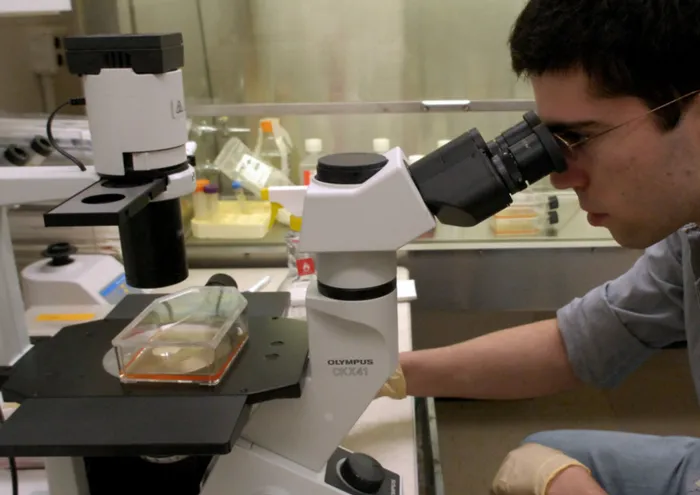Radiotherapy 'causes cancer to spread'

File photo: The research, led by Jeremy Price of Icahn School of Medicine in New York, has ignited a debate among experts over the treatment. File photo: The research, led by Jeremy Price of Icahn School of Medicine in New York, has ignited a debate among experts over the treatment.
London -Radiotherapy to tackle cancer may interfere with the body’s natural ability to fight the disease, scientists have found.
While it kills some cells in a tumour, it can cause surviving cancerous cells to spread.
Radiotherapy works by blasting the cancer with high-energy beams of radiation – usually X-rays.
But some experts warn that doctors should avoid using it for skin cancer because it can hasten the spread of the disease. Researchers found when radiotherapy was used to treat skin cancer in mice, certain cells within the tumour were able to resist it.
These surviving “Langerhans cells” migrate to lymph nodes where they trigger the creation of other cells that suppress the body’s immune response. This causes cancerous cells to multiply, the scientists wrote in the journal Nature Immunology.
Radiotherapy can be used for skin cancers that cover a large area – where surgery would require removing large amounts of skin – and to treat patients not fit enough for a general anaesthetic.
But the research, led by Jeremy Price of Icahn School of Medicine in New York, has ignited a debate among experts over the treatment.
Laurence Zitvogel, research director at the French National Institute of Health, and Guido Kroemer, professor of medicine at the University of Paris Descarte, warned the study had convinced them radiotherapy was not the answer.
They wrote that “whenever possible, irradiation of major skin areas should be avoided so that a minimum number of (Langerhans cells) are mobilised for immunosuppression.” But Rod Sinclair, a professor of medicine at the University of Melbourne, warned doctors not to “throw the baby out with the bath water”.
He added: “Radiotherapy is an established treatment.
“For well-selected tumours, the cure rate is high and the main limitation of radiotherapy is long-term damage to the skin which manifests ten to 15 years after the initial tumour has gone.”
He added that radiotherapy was sometimes used for advanced skin cancers where surgery was no longer feasible.”In this situation the cure rate is suboptimal and the paper by Price et al helps explain why this might be so.
“Nevertheless, it is important not to throw the baby out with the bath water and remember radiotherapy still has an important place.”
Daily Mail